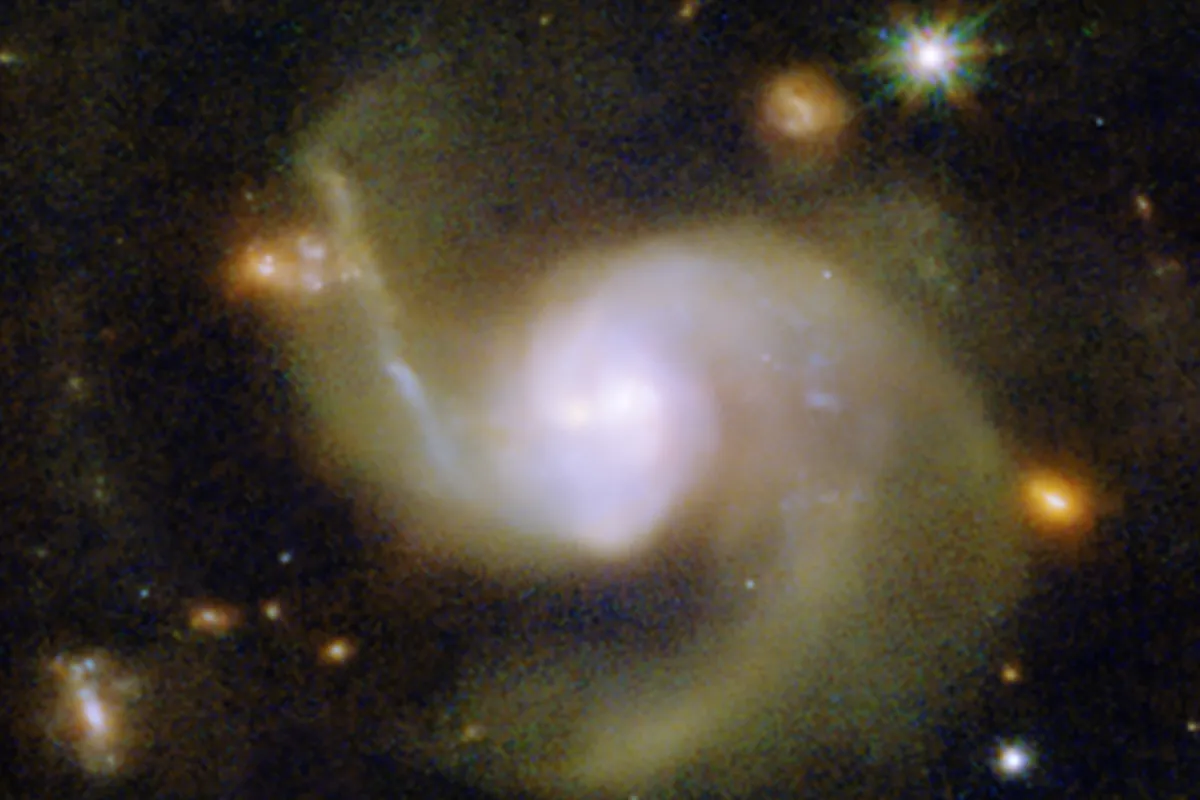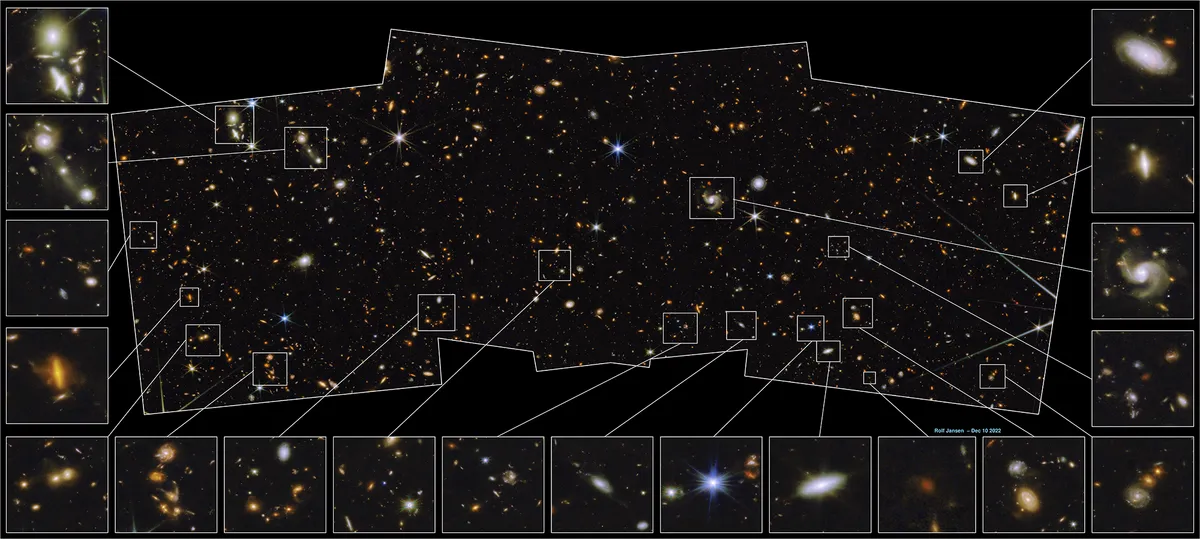A brand new image of the cosmos has been released by the James Webb Space Telescope team.
The image shows distant galaxies stretching into deep space, and covers an area of the sky just 2% of the area covered by the full Moon.
Thousands of galaxies can be seen in the image, the faintest of which are about 1 billion times fainter than what can be seen with the naked eye.
This is referred to as a 'medium-deep wide-field' image.
Light from the most distant galaxies has traveled almost 13.5 billion years to reach us.
See the latest James Webb Space Telescope images

8 different colours of near-infrared light make up the image, all captured by Webb's Near-Infrared Camera (NIRCam), which reveals objects and structures that would not be visible in optical light.
Much of this new image was previously unseen in other observations by the Hubble Space Telescope or other ground-based observatories.
The study is part of the Prime Extragalactic Areas for Reionization and Lensing Science (PEARLS) GTO program.

"For over two decades, I've worked with a large international team of scientists to prepare our Webb science program," says Rogier Windhorst, Regents Professor at Arizona State University (ASU) and PEARLS principal investigator.
"Webb's images are truly phenomenal, really beyond my wildest dreams. They allow me to measure the number density of galaxies shining to very faint infrared limits and the total amount of light they produce."
"The diffuse light that I measured in front of and behind stars and galaxies has cosmological significance, encoding the history of the Universe," says Rosalia O'Brien, a graduate research assistant at ASU.
"I feel very lucky to start my career right now. Webb’s data is like nothing we have ever seen, and I'm really excited about the opportunities and challenges it offers."
Read the full science paper at iopscience.iop.org/article/10.3847/1538-3881/aca163
